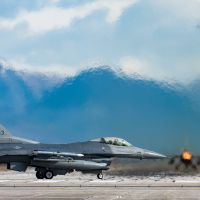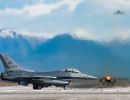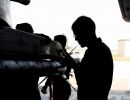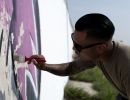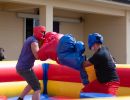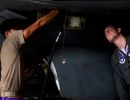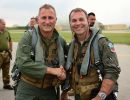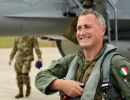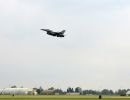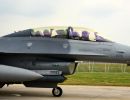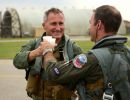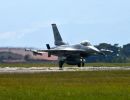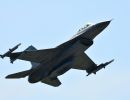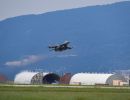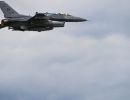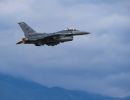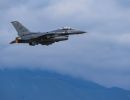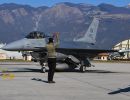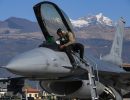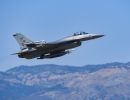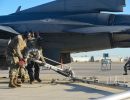The Air Force's 332nd Air Expeditionary Wing, to which they are currently deployed, provided close air support in the joint, combined effort to route the enemy in battle.
The 332nd AEW's F-16 Fighting Falcons and A-10 Thunderbolt IIs answered ground forces' call for close air support after insurgents attacked them with small arms fire, and rocket-propelled and hand grenades. They dropped more than 3.5 tons of precision munitions, 1,200 rounds of 20mm and 1,100 rounds of 30mm cannon fire in an area of about five square miles.
F-16 Fighting Falcons from the 510th Expeditionary Fighter Squadron, 14th EFS and 332nd EFS, based out of Balad Air Base, as well as A-10 Thunderbolt IIs from the geographically separated 74th EFS at Al Asad Air Base, all participated.
The 36-hour action was the first time all the wing's fighter aircraft have simultaneously employed ordnance in a single operation. Three of the squadrons, the 14th, 510th and 74th EFS, joined the wing's ranks just last month.
Talking directly to pilots during the mission was a Joint Terminal Attack Controller - an Airman embedded with Army ground forces, said Lt. Col. Bob Winkler, an F-16 pilot assigned to the 510th EFS.
Army ground liaison officers routinely coordinate with these Airmen for mission-specific details to better prepare pilots before missions. "Initially, we weren't involved in Najaf since ground forces hadn't yet
requested air support," said Army Sgt. 1st Class Levern Randall, 332nd AEW ground liaison noncommissioned officer. "Once airpower was requested, we supported the recovery operations of the downed helicopter."
First Lt. George Collings and Maj. August Marquardt were on alert when their F-16s were called to scramble. Within minutes of reaching the battlespace, the lieutenant dropped a 500-pound bomb on a position near a canal where the enemy had pinned down friendly forces on their way to the downed helicopter, said Major Marquardt.
The two pilots, in country three weeks, were on their eighth Operation Iraqi Freedom combat mission. "It's not every day the Army wants bombs dropped immediately - that's how serious they wanted to get to that helicopter. It was extremely rewarding to help," said Major Marquardt, who dropped two 500-pound bombs himself during the course of their three hour mission.
"Everyone over here does their part to get the job done - I'm just lucky I get to do mine with bombs," said Lieutenant Collings. "The guys on the ground are the real heroes."
Helping the pilots get off the ground are crew chiefs - the professional aircraft maintainers responsible for inspecting the systems, engines, and motor before and after each flight.
Pilots and ground forces count on these Airmen to ensure the munitions launch. "I was proud to know my jet was doing what it was made to do," said Senior Airman Billy Butler, crew chief and tactical aircraft maintainer. "We knew we had to get those jets turned around and back in the air quickly, and safety is first in our minds when we're under surge operations."
Throughout the operation, the 332nd Expeditionary Aircraft Maintenance Squadron sustained normal and surge operations simultaneously, and at one point, had jets quick-turned two hours ahead of schedule. With more than 3.5 tons of precision munitions dropped, the jets were fully loaded for each launch.
The majority of Air Force combat airpower in Iraq launches from the busy runways of the 332nd AEW at Balad Air Base, 40 miles north of Baghdad.
"I'm pretty darn proud of the operations, maintenance and combat support efforts of our Tuskegee Airmen team!" said Brig. Gen. Robin Rand, 332nd AEW commander.

